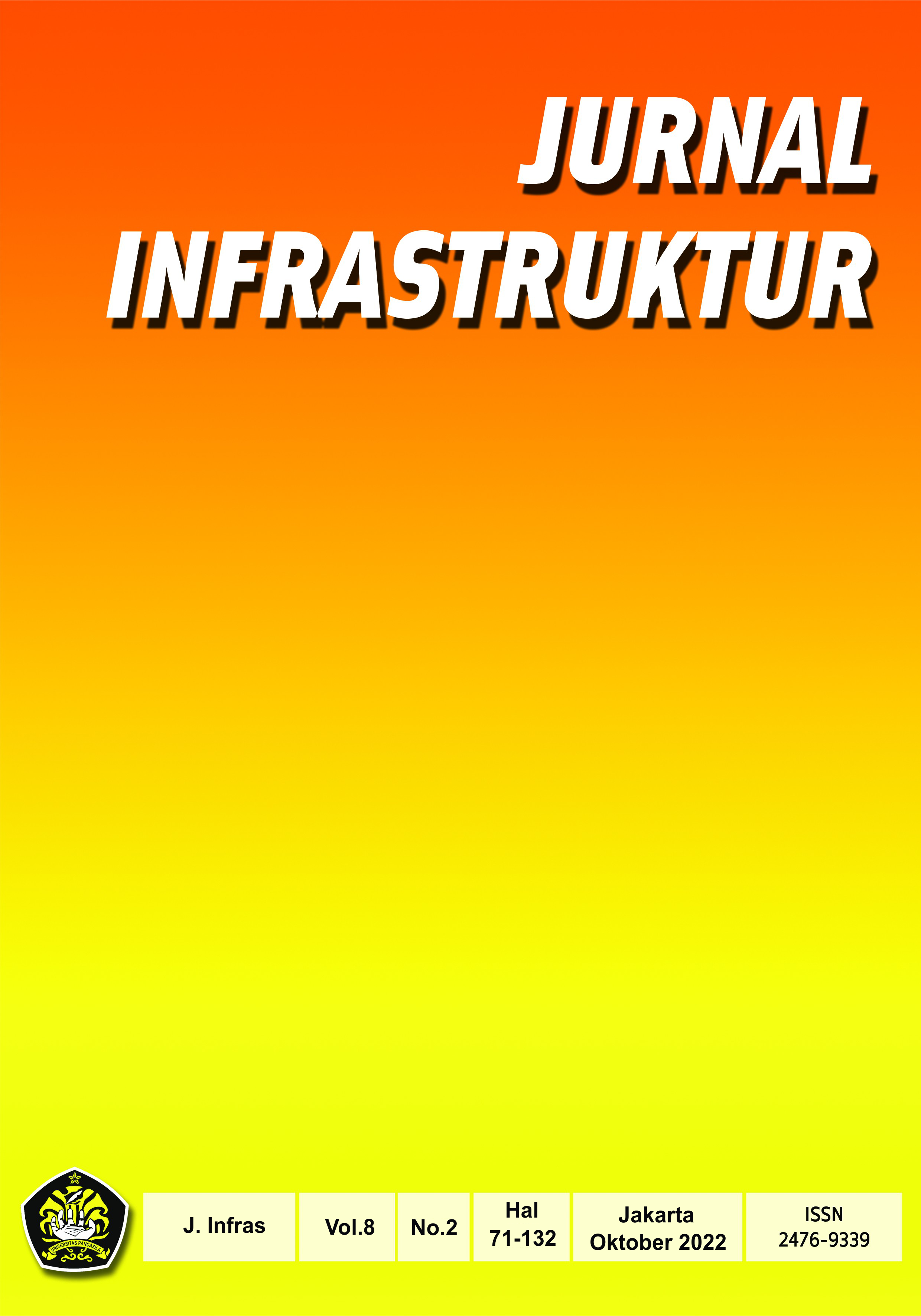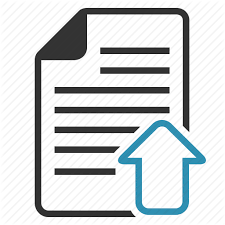EVALUATION OF IMPLEMENTATION CONSTRUCTION SAFETY MANAGEMENT SYSTEMS OF TOLL ROAD INFRASTRUCTURE CONSTRUCTION PROJECT DURING PANDEMIC COVID-19 IN INDONESIA
ABC Toll Road Case Study
Abstract views: 317 | pdf downloads: 686
Abstract
The high level of development is directly proportional to the probability of accidents that may occur. In Indonesia, work accidents in the construction sector still often happened. Based on data from the Ministry of Public Works website in 2015, the construction sector gave place for 32% of the proportion of work accidents in Indonesia. This study aims to evaluate the implementation of the construction safety management system for toll road infrastructure project refers to the Minister of Public Works and Public Housing Regulation Number 10 of 2021 concerning Guidelines for Construction Safety Management Systems. This research applied a case study method-based with indepth interview and questionnaire techniques which were reviewed by descriptive analysis and statistical tests. The results of this study indicate that the implementation of the construction safety management system on the Becakayu Connection Toll Road – Wiyoto Wiyono 1 Toll Road project is in the satisfactory category. There are several indicators whose implementation is not in accordance with the PUPR Ministerial Regulation Number 10 of 2021 due to the lack of insight or knowledge regarding the SMKK implementation program. The formulation of a recommendation strategy for improving the implementation of SMKK can be done by 1) Providing education, training, and/or counseling related to SMKK 2) Compiling SMKK documents in accordance with applicable regulations 3) Strengthening SMKK inspection programs and safety patrols 4) Documenting SMKK implementation activities 5) Procurement of activities such as safety morning talk and Toolbox meeting and procurement of facilities such as K2 information boards 6) Conduct safety meeting with MP regarding construction safety policies and explain to all project stakeholders 7) Provide awards or incentives if construction safety is achieved and 8) Conduct studies more in depth related to SMKK regulations.
Keywords: Construction Safety; Safety Culture; SMKK; K3.
References
Awuy, T., Pratatis, P. A., & Mangare, J. B. (2017). Faktor-Faktor Penghambat Penerapan Sistem Manajemen K3 Pada Proyek Konstruksi di Kota Manado. Jurnal Sipil Statik, 187-194.
Badan Pusat Statistik. (2020, 12 21). Indikator Konstruksi. Jakarta: Badan Pusat Statistik. Retrieved from Badan Pusat Statistik: https://www.bps.go.id/publication/2020/12/21/b01c99ed67cf0862178979dd/indikator-konstruksi-triwulan-ii-2020.html
Kementrian PUPR. (2021, Mei 23). Jalan Tol Dalam Pembangunan. Retrieved from Open Data PUPR: https://data.pu.go.id/dataset/jalan-tol-dalam-pembangunan
Kementrian PUPR. (2021). Peraturan Menteri Pekerjaan Umum dan Perumahan Rakyat Republik Indonesia Nomor 10 Tahun 2021 Tentang Sistem Manajemen Keselamatan Konstruksi. Jakarta: Kementrian Pekerjaan Umum dan Perumahan Rakyat.
Mahdi, M. I. (2022, April 28). DataIndonesia.id. Retrieved from Kasus Kecelakaan Kerja di Indonesia Alami Tren Meningkat: https://dataindonesia.id/sektor-riil/detail/kasus-kecelakaan-kerja-di-indonesia-alami-tren-meningkat
Naser, R. M. (2015, Juni). Strategi Implementasi Sistem Manajemen Kesehatan dan Keselamatan Kerja (SMK3) Pada Proyek Konstruksi. Depok: Universitas Indonesia.
Pattisinai, A. R., Widayanti, F. R., Nusantara, D. A., & Nadiar, F. (2020). Pentingnya Keselamatan dan Kesehatan Kerja (K3) Pada Site Proyek Konstruksi di Era Pandemi Covid-19. Proteksi, 84-89.
Pringgodani, S. (2015). Faktor-Faktor Lapangan Yang Mempengaruhi Produktivitas Kerja di Yogyakarta. Yogyakarta: UAJY.
QSI. (2017, Agustus 8). Klafisikasi Temuan Audit Eksternal oleh Badan Sertifikasi ISO. Retrieved from Quality System Indonesia: http://sertifikatisomurah.com/2017/08/klasifikasi-temuan-audit-eksternal-oleh-badan-sertifikasi-iso/
Riau, H. (2020). Penilaian Risiko Menggunakan Metode Delphi. ResearchGate.
Salmaa. (2021, Juli 1). Deepublish. Retrieved from Instrumen Penelitian: Pengertian, Jenis-Jenis, dan Contoh Lengkap: https://penerbitdeepublish.com/instrumen-penelitian/
Sangitania, B., Astanto, I. W., & Nugraha, P. (2021). Studi Awal Pengaruh Covid-19 Terhadap Pekerjaan Konstruksi Tradisional dan Konstruksi 4.0. Jurnal Dimensi Pratama Teknik Sipil, 9-16.
Sekretariat Direktorat Jenderal. (2019, Februari 26). Pemerintah Genjot Sertifikasi Ahli K3. Retrieved from Kementrian Pekerjaan Umum dan Perumahan Rakyat Direktorat Jenderal Bina Konstruksi: https://binakonstruksi.pu.go.id/informasi-terkini/sekretariat-direktorat-jenderal/pemerintah-genjot-sertifikasi-ahli-k3-2/
Soeharto, I. (1995). Manajemen Proyek dari Konseptual sampai Operasional. Jakarta: Erlangga.
Sugiyono. (2011). Metode Penelitian. Bandung: CV. Alfa Beta.
Syahbowo, A. H. (2021). Pengaruh Penerapan SMKK Terhadap Pencegahan Risiko Kecelakaan dan Penyakit Akibat Pekerjaan Konstruksi. Politeknik Negeri Jakarta.
Copyright (c) 2022 Jurnal Infrastruktur

This work is licensed under a Creative Commons Attribution-NonCommercial-ShareAlike 4.0 International License.














